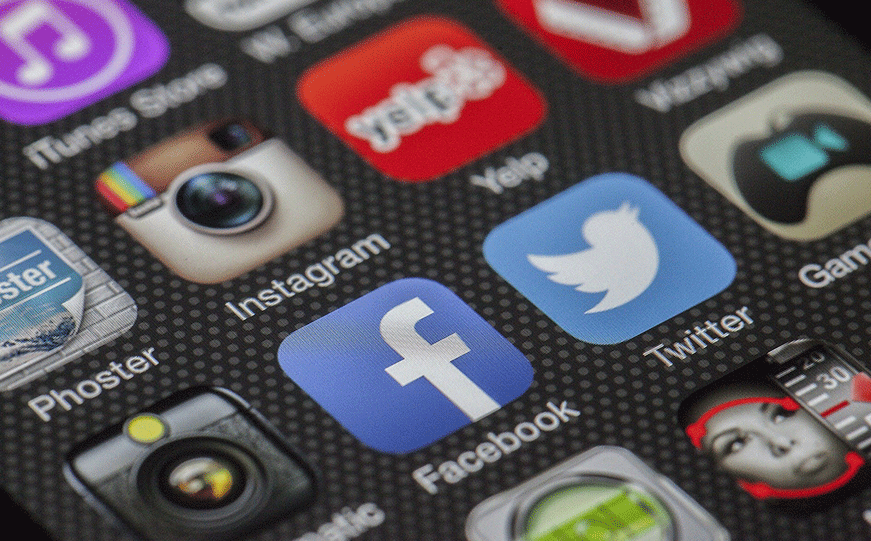Amidst the uncertainty of COVID-19, we’re all trying to settle into the “new normal.” While that means something a little different to everyone, we all share a common goal: trying to adapt to something most of us didn’t see coming. While the pace of life has slowed and many people find themselves sheltering in place to combat the spread of the virus, a great reordering is taking place. Building Product brands are re-evaluating what’s most important to them and utilizing social media to communicate in ways that are new – even in 2020. And why not? Famous musicians are giving concerts from their bedrooms while politicians and business leaders are conducting interviews from their home offices. A “fourth wall” of formality has been broken, giving way to new and more intimate means of communication.
This moment provides building product companies with an opportunity to put traditional fears and formalities aside and look for ways to learn, grow, and strengthen the value they provide to customers. As your brand must have a presence on social media, now is the time to reach out to your followers in a more authentic and helpful way. If your company doesn’t have a robust presence on social media, this may be the time to allocate budgets that would have been invested in trade shows and domestic or foreign travel to online content marketing campaigns… that are more meaningful and informative, rather than overly promotional.
The postponement or – in some cases – cancellation of industry tradeshows scheduled for the remainder of 2020 has freed up marketing dollars for many brands. Because these companies aren’t getting “face time” with prospects and customers at tradeshows, it’s crucial to keep their brands top of mind.
These are sensitive times and it is a perfectly natural response for companies to want to put their heads in the sand and ‘go dark’ on customer outreach until life and the economy gets back to normal. Fortunately, there are a number of ways to reach customers during this time without alienating them.
Download our Free White Paper to provide strategies on leveraging social media communications in a post COVID-19 world and enjoy a refresher on the top social media tools, designed to help propel your brand
Social Media Trends Happening Right Now

Make no mistake, the earth under our feet is shifting as we speak. There is an economic tsunami coming for businesses unable to communicate meaningfully with their customers or offer value from a distance. The likely demise of AMC Theatres, the biggest theater chain in North America, is just one example of businesses that may not survive in a post COVID-19 world.
Here are some media trends happening right now that Building Product Brands should consider:
- In-Home Data Usage Is Surging – With millions more people working from home and at least 70 percent of American schools shutting down amidst the COVID-19 pandemic, in-home data usage is on the rise. According to Comscore, average in-home data usage is up 18 percent so far in March 2020 vs. the same amount of time in March 2019 (March 1-17, 2019 vs. March 1-17, 2020). The most notable device-level data usage increases seen thus far are for mobile phones, smart speakers, connected TVs and streaming boxes/sticks. These increases are likely from all family members interacting with more streaming media while staying home.
- Social Media Use Is Increasing – Social media usage has grown as a result of the COVID-19 crisis, as more users go online to stay connected with family, friends and colleagues. Recent insights reveal exactly how much some apps are benefiting. According to a recent survey of more than 25,000 consumers in 30 markets conducted by consulting firm, Kantar, from March 14 to 24, WhatsApp usage spiked by 51 percent in some countries, compared to last year. Across all messaging platforms, the growth in usage has been the largest in the 18 to 34-year-old age group. WhatsApp, Facebook and Instagram all saw a 40 percent-plus increase in usage from this same demographic.
- Many Brands Are Increasing their Social Media Advertising – While many companies have pulled ad campaigns or suspended production of their product entirely (as Grupo Modelo recently shut down the production of Corona beer), other brands are boosting their social content marketing campaigns in an attempt to communicate more intimately with captive audiences. While many brands are suffering, others such as virtual video conferencing have seen upticks in sales and stock value. That demand is translating into boosted promotional budgets. Marketing technology firm 4C Insights found a 25 percent year-over-year increase overall in ad spending on digital platforms for the first half of March.
While the COVID-19 pandemic is causing some business models to crumble, confident brands are refusing to roll over. Building product companies – which make products that impact the lives of contractors, specifiers and influencers on a daily basis – can leverage social media to maintain their footing and even gain new ground.
Reallocating Tradeshow Dollars to Digital and Content Marketing
Kleber & Associates has interviewed our media partners over the past several weeks and a sizable number have told us they are seeing increased interest from brands in both print and online advertising. The good news is that publishers are, in many cases, willing to help out brands by providing additional incentives – for example, offering native content or digital ads in addition to display ads. So, if you’re currently loyal with a trade publishing group, it might be worth your time to re-evaluate your budget. Or this could be a great time to dip your toes in new waters. While everyone needs to be sensitive to the times, remember that your business needs to sell to survive and content marketing will be increasingly important moving forward.
If your brand targets consumers, this could be a good time to increase your Google AdWords or Facebook advertising spend. We’re witnessing an uptick in our clients’ web traffic and ad engagement. If your brand isn’t currently advertising on these platforms, you might want to explore how you can leverage dollars freed up from tradeshows towards online advertising. One of the great things about Google and Facebook ads is that you can modify (or discontinue) them at any time.
As your brand likely has some degree of presence on social media, take the time to reach out to your followers in an authentic and helpful way. Try to make your posts educational and – within your brand standards – inject some lighthearted humor. The key is not to be overly promotional. If you’re offering discounts on products and services, then – by all means, promote that – but be careful not to use the current situation as a way to inundate a captive audience with messages about how great your products are or try to make the hard sell. Your business should definitely be running ads on social media networks, but be mindful that most people are just trying to hold it together right now. Put yourself in another’s shoes and think about what might resonate most with them. Don’t be afraid to connect and show your brand’s human side. Lean into video content that isn’t overly produced or highly stylized. This is the time to build affinity and be a good corporate citizen.

Being Proactive on Social Media
These tumultuous times have emphasized how important it is for companies to understand how to use social media effectively. In many businesses (not just building product companies), social media outreach is the shared responsibility of several program managers who may not be deeply concerned about social media. In other companies, the social media manager is a duty farmed out to a young staffer who is tasked with creating content that generates views and likes rather than meaningful conversations. While many helpful tools have come about over the past decade to help automate social media outreach (e.g. Hootsuite, Loomly, Mailchimp), companies can no longer afford to run their social media programs on autopilot. Now is a good time to study your customer’s (and competitors’) behaviors and tendencies and retool your social media outreach in more meaningful ways.
For starters, social media managers should take a hard look at their editorial calendars and cancel all scheduled posts. There are several reasons to do so. One, the news cycle is changing constantly and managers need to be sensitive to that by communicating in real time. Two, audiences may not be working regular hours anymore as professionals are balancing home life, caring for children and working in unfamiliar settings. Rather than putting together 30 days of social media posts in advance, a better strategy going forward may be to utilize social media listening tools (e.g. Hubspot, Buffer, TweetReach, BuzzSumo) to inform your content and create native posts that reflect what’s happening now. It may mean communicating less often, but the priority for your social media outreach should be relevant information… meaningful customer conversations and message amplification rather than clicks.
Shifting from click metrics can be a difficult transition for companies, as so many businesses operate on the stance, “You can’t manage what you don’t measure.” However, this approach puts the emphasis on listening rather than talking. In a future that feels uncertain for many, audiences need a partner who will listen and respond to their needs, not just sell them products. In order to maximize the effectiveness of your messaging, you may need to re-examine your online traffic to see when customers are actually interacting with your posts. If your peak messaging interaction times in a 9-to-5 world were lunch time and 4 p.m., those times may have shifted as more people work from home. As companies attempt to recoup losses and re-evaluate their work forces, telecommuting may become the norm for many businesses moving forward.
In B2B marketing and sales, webinars are often one of the most effective tools for moving potential customers through the sales funnel. They give your company a chance to highlight the stars of your team and position them (and the company) as thought leaders. When webinars are interactive (and they should be), customers are afforded a tailor-made sales interaction that is a meaningful use of their time. If your brand works with a dealer network, use virtual roundtable events to build loyalty among your dealers and distributors. Consider using one of the available web conferencing tools such as Zoom or Skype to hold a virtual dealer meeting. Great topics to discuss may be plans for growing brand awareness in a post COVID-19 environment and how you are supporting your partners in keeping their businesses going. Keep your sessions brief (less than an hour), use cameras to keep people engaged (don’t just talk over PowerPoint slides) and be sure to have a moderator. This host is like a referee who can help maintain the pace of the presentation, keep the energy levels high and put important information into context for the benefit of listeners. The key is to let your customers know that you’ve “got their backs” and give them a chance to interact with a helpful face.
Putting a Social Media Plan into Place
While we know this time is challenging and full of unknowns, it is not the time to run and hide or put your head in the sand in regards to social media. If you haven’t thought deeply about social media in a while or your company doesn’t have a solid social media strategy, the best time to develop one may well be now. Kleber & Associates has put together a social media guidance, updated for 2020 and geared especially toward marketers and messengers working in the building products industry. We offer this to you, free of charge, as we all have a vested interested in getting through these tough times together. Stay safe and well.





